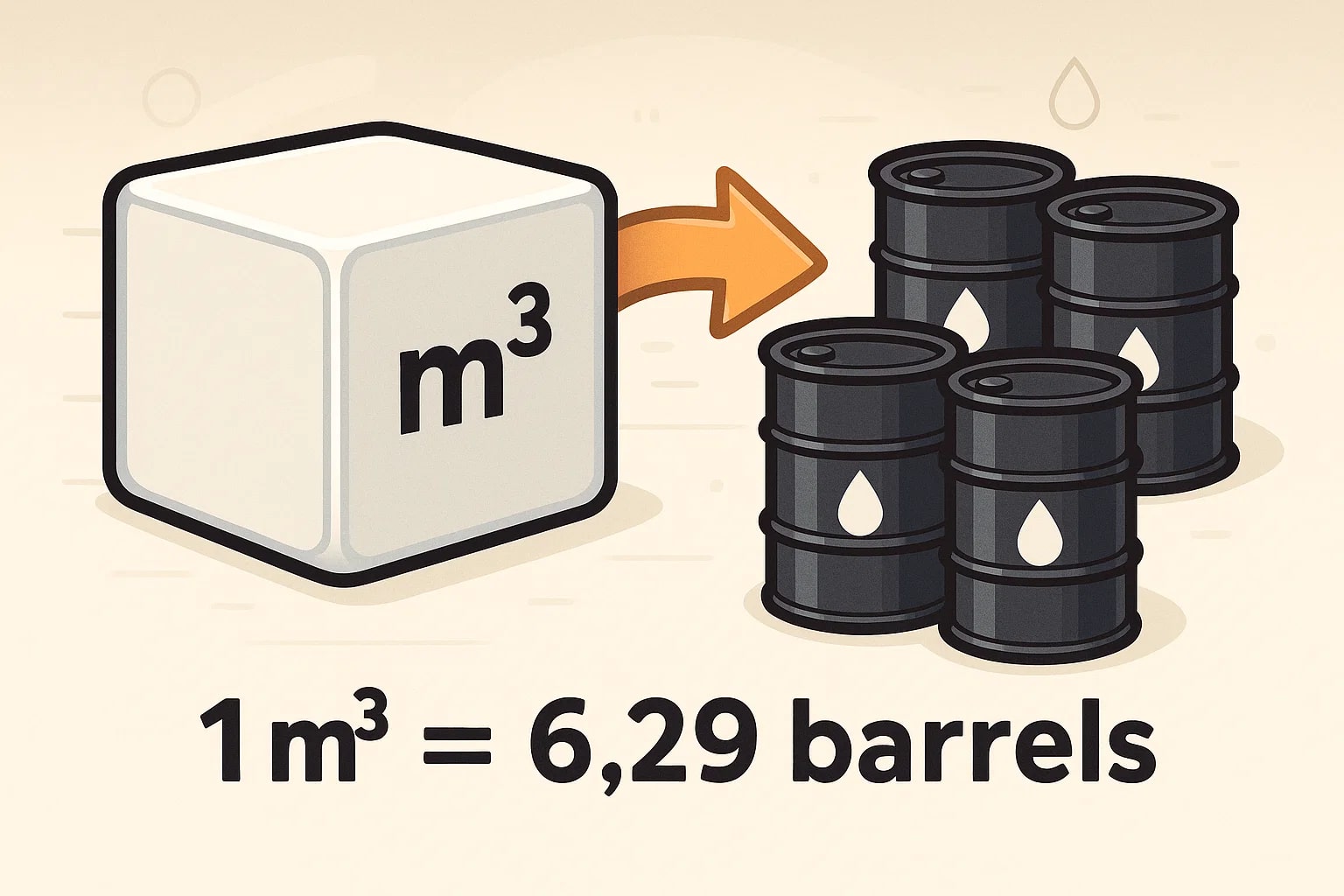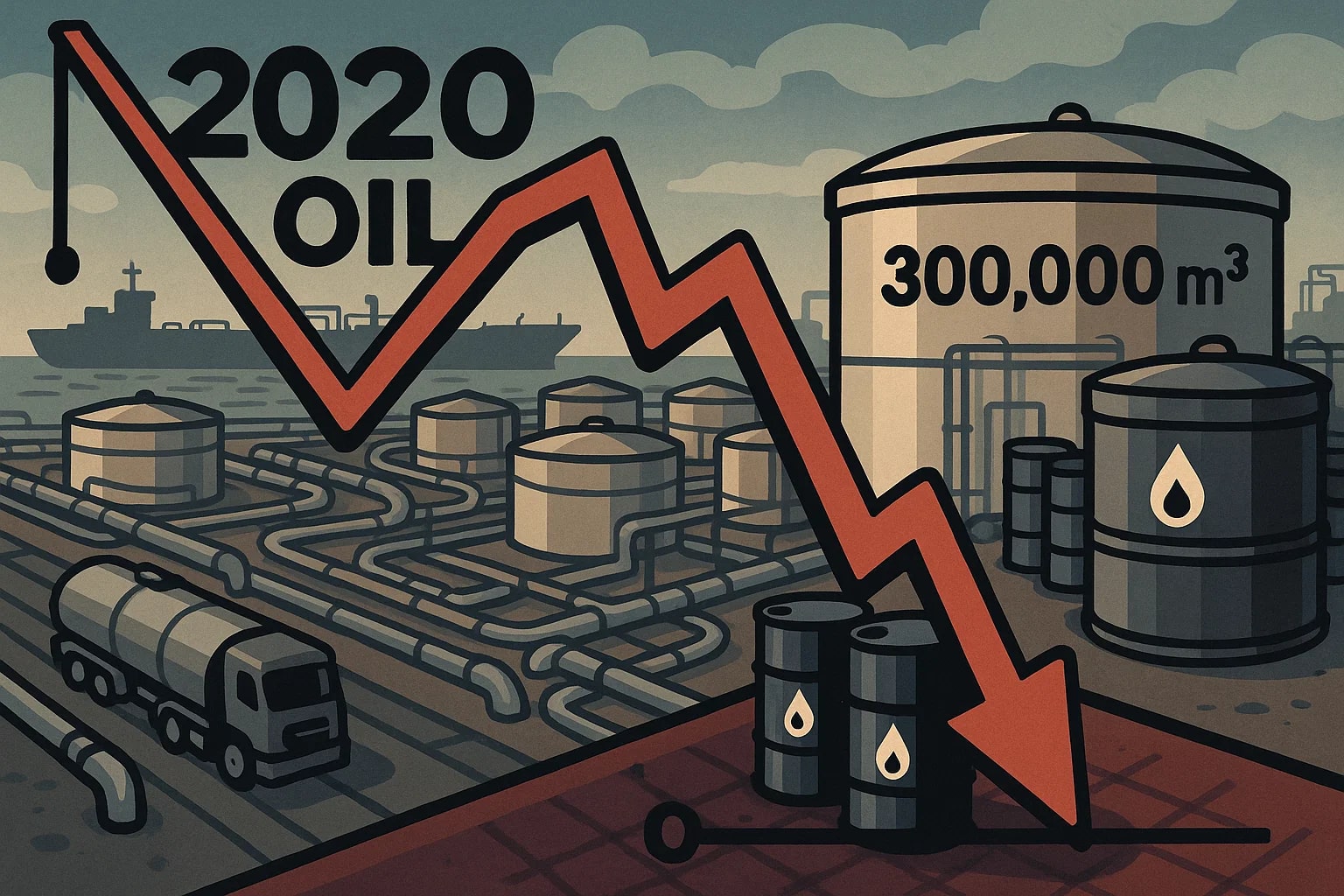cubic meter to barrel oil – How to convert m³ to bbl
Need to convert cubic meter to barrel oil? This isn’t just a technical calculation—it’s a vital operation in energy, shipping, and global trade. Whether you're dealing with petroleum exports, tank capacities, or oil logistics, understanding how to convert m³ to bbl (barrel) is essential.
And if you’re working with other volume units too, try our Volume Converter to quickly switch between liters, gallons, cubic inches, and more.
What Is a Cubic Meter?
A cubic meter (m³) is the SI (International System of Units) standard for measuring volume. It equals the volume of a cube with each side measuring one meter.
-
1 m³ = 1,000 liters
-
Common in science, construction, and international logistics
-
Used for measuring everything from water and concrete to gas and oil
Because it’s metric, cubic meters offer a clear, scalable way to manage large volumes—especially when you're working with international units.
What Is a Barrel (of Oil)?
A barrel (bbl) is a unit of volume commonly used in the oil and gas industry. Specifically:
-
1 barrel of crude oil = 42 U.S. gallons ≈ 159 liters
-
Originated in the 19th century during the Pennsylvania oil boom
-
Still used globally for pricing and trade benchmarks (e.g., Brent, WTI)
Unlike cubic meters, which are metric, barrels are a non-metric industrial unit—but they’ve stood the test of time in petroleum markets.

How to Convert Cubic Meters to Barrels (Oil)
To convert cubic meters to barrels, you use the standard conversion: 1 m³ = 6.2898 barrels (bbl)
So, to convert: barrels = cubic meters × 6.2898
Example: 10 m³ of crude oil = 10 × 6.2898 = 62.898 bbl
Need to go the other way? Use our Barrel to Cubic Meter Converter for fast reverse calculations.
If you're dealing with liquids in other unit systems, you may also find our Cubic Meters to Gallons tool helpful for non-oil volume comparisons.
Did you know?
-
A single cubic meter of olive oil weighs around 918 kg and is worth over $10,000 USD at retail. High-end producers often track their yield per cubic meter as a sign of quality and market value.
-
The largest oil barrel ever built wasn't for storage—it was a marketing stunt. In 1950s Texas, a life-size “barrel” the size of a small house was placed outside a refinery to represent U.S. oil power. It could fit 1,000 people inside and was even used for barbecues.
-
1 barrel of crude oil, when refined, can yield around:
-
19.5 gallons of gasoline
-
10 gallons of diesel
-
4 gallons of jet fuel
That’s why barrel conversion isn’t just about volume—it’s about how the contents are split into products that run the world.
From Tanker Ships to Pipelines
In April 2020, a historic event shocked the oil world: U.S. crude oil futures dropped below $0 per barrel for the first time ever. Why? A massive oversupply collided with a global lockdown—and there was no more storage space left.
Suddenly, tank capacity became a hot commodity. Companies scrambled to book space by the cubic meter in tankers, railcars, and storage terminals. One supertanker can hold around 300,000 m³, which equals over 1.8 million barrels.
If you’re managing fuel storage on land, check out our Tank Volume Calculator to compute capacity based on your tank’s shape and dimensions.
This wasn’t just a numbers game. It showed the world that understanding oil volumes—both in cubic meters and barrels—can literally make or break billions of dollars.

Conclusion
Whether you're managing logistics, tracking oil reserves, or working with fuel transport, converting cubic meter to barrel oil is a critical skill in both industry and education.
Want to simplify the math? Try our Volume Converter to convert between all major volume units instantly. Or explore more specialized tools in our Conversion Tool section—designed for engineers, students, and global businesses alike.
Jetcalculator makes it easy to bridge metric and imperial systems, so no matter where you work or what you manage, you can convert with confidence—every time.

